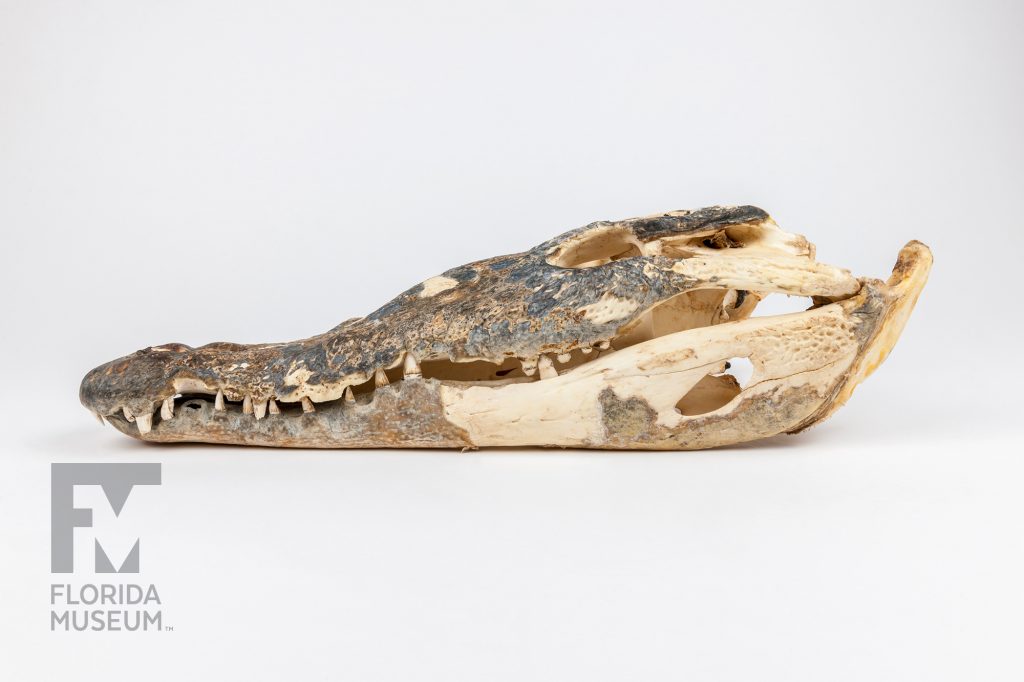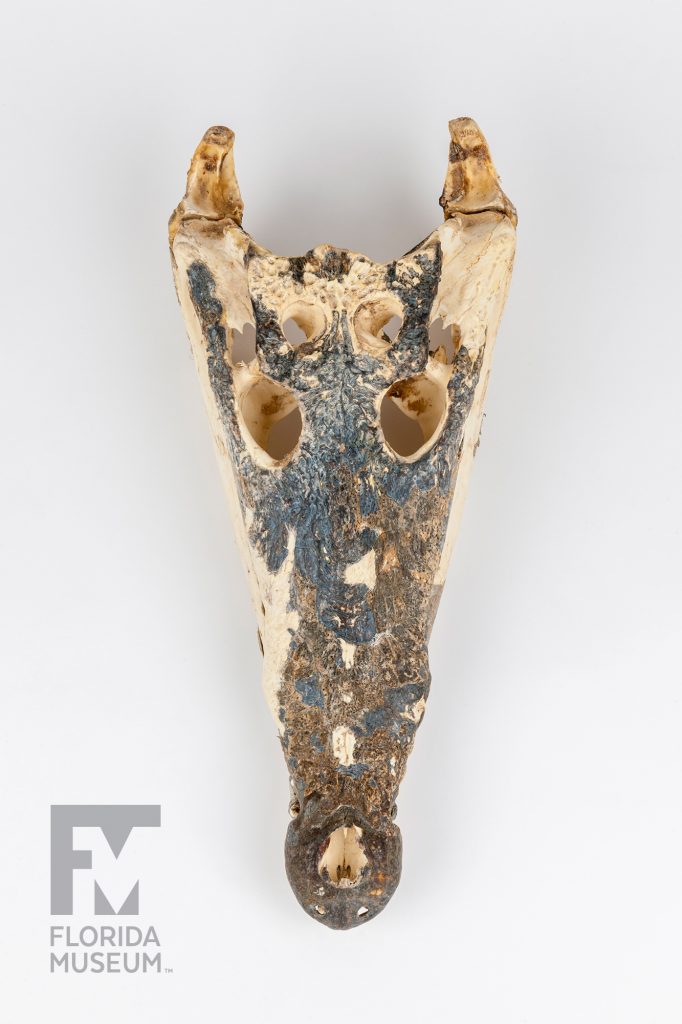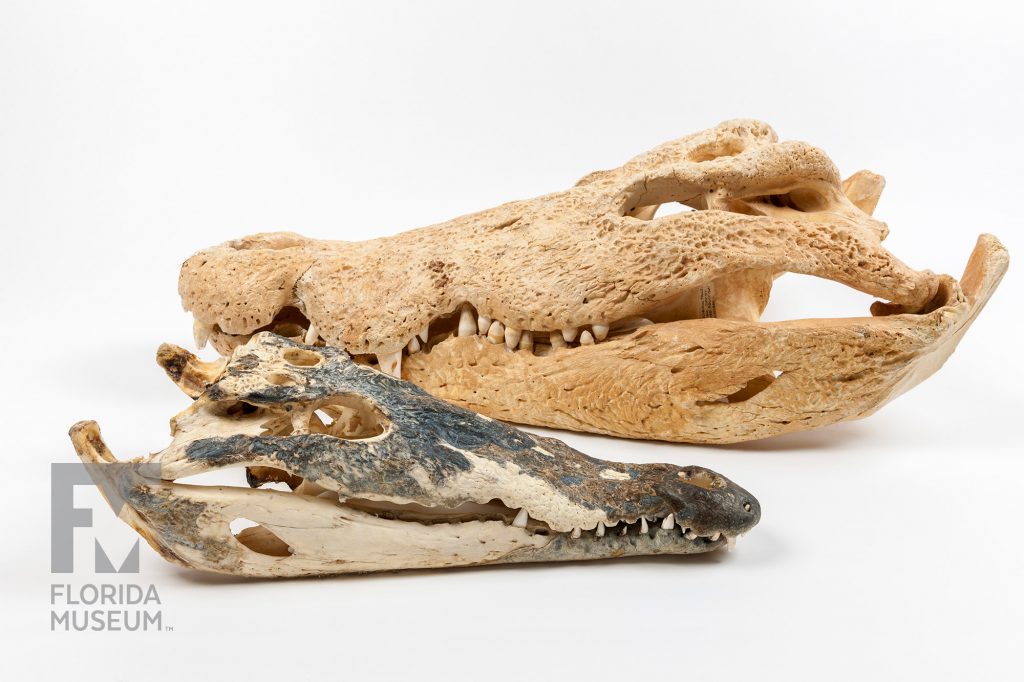Hunting and habitat destruction have caused severe declines in Florida’s American Crocodile populations. Conservation efforts brought crocodiles back from the edge of extinction, but continued management is needed.
Summary
American Crocodile (Crocodylus acutus)
Collection information unknown
Collection
Story
Everybody knows that Florida has alligators, but many people don’t realize that some crocodiles call Florida home. American Crocodiles can be found in South Florida, mostly in Florida Bay and the northern Florida Keys, but also as far north as Lake Worth on the Atlantic Coast and past Marco Island on the Gulf Coast, with occasional individuals traveling as far north as Sanibel Island or even Tampa Bay.
Although the presence of crocodiles in Florida was first suggested in the early 1820s, confirmation of that fact – that American Crocodiles occur in Florida – was not known to science until 1869.
This species ranges widely in central and northern South America and through the Greater Antilles, so the Florida population is really just the northern-most extent of this broad distribution. As such, this species was probably never too numerous in Florida. These crocodiles don’t like cold, and unusually chilly winters in South Florida can kill some of them.
In the late 1880s and early 1900s, the species was hunted for its hide and for sport. Coastal mangrove habitats in which crocodiles live were destroyed by development, large numbers of the crocodiles were collected for exhibition and as motor vehicle traffic grew in the late 1930s as people moved into South Florida, road kills took their toll on the crocodile population as well. So the population dropped to dangerously low levels, perhaps only two or three hundred individuals, and it was placed on the endangered species list in 1975.
The salvation of this species in Florida came from an unlikely source – a nuclear power plant. The Turkey Point Nuclear Power Plant near Miami constructed a massive series of canals to cool the water used to cool the reactor. These canals, dug out of the hard lime rock soils, covered about 5 square miles. Unintentionally, the soil mounded up between the canals as they were dug created almost perfect crocodile nesting habitat. And as it was located in an area that was completely protected from human intrusion, crocodiles were left to do their own thing. So crocodiles moved in and began nesting, and since then thousands of baby crocodiles hatched from these nests have dispersed out into other parts of South Florida, including Crocodile Lakes National Wildlife Refuge.
There are now about 2,000 American Crocodiles living in South Florida, perhaps more than ever existed here prior to their discovery.
Kent Vliet
Coordinator of Laboratories, Biology Department*
Alligator and Crocodile Biologist
University of Florida
Exhibit
On display Sept. 23, 2017-Jan. 7, 2018, Rare, Beautiful & Fascinating: 100 Years @FloridaMuseum celebrated the Museum’s rich history. Each Museum collection was asked to contribute its most interesting items and share the stories that make them special. Though the physical exhibit is closed, this companion website remains online, providing an opportunity to experience the Florida Museum’s most treasured specimens.
Exhibit Area: On the Brink
Theme: Success Story
 Want to see more? Explore more than 300 breathtaking color photos of plants, animals, fossils and cultural heritage materials from the Florida Museum of Natural History’s collections in the award-winning book All Things Beautiful available from the University Press of Florida.
Want to see more? Explore more than 300 breathtaking color photos of plants, animals, fossils and cultural heritage materials from the Florida Museum of Natural History’s collections in the award-winning book All Things Beautiful available from the University Press of Florida.
*This title was accurate at the time the exhibit was on display in 2017. Please visit the department website to verify current staff and student information.


